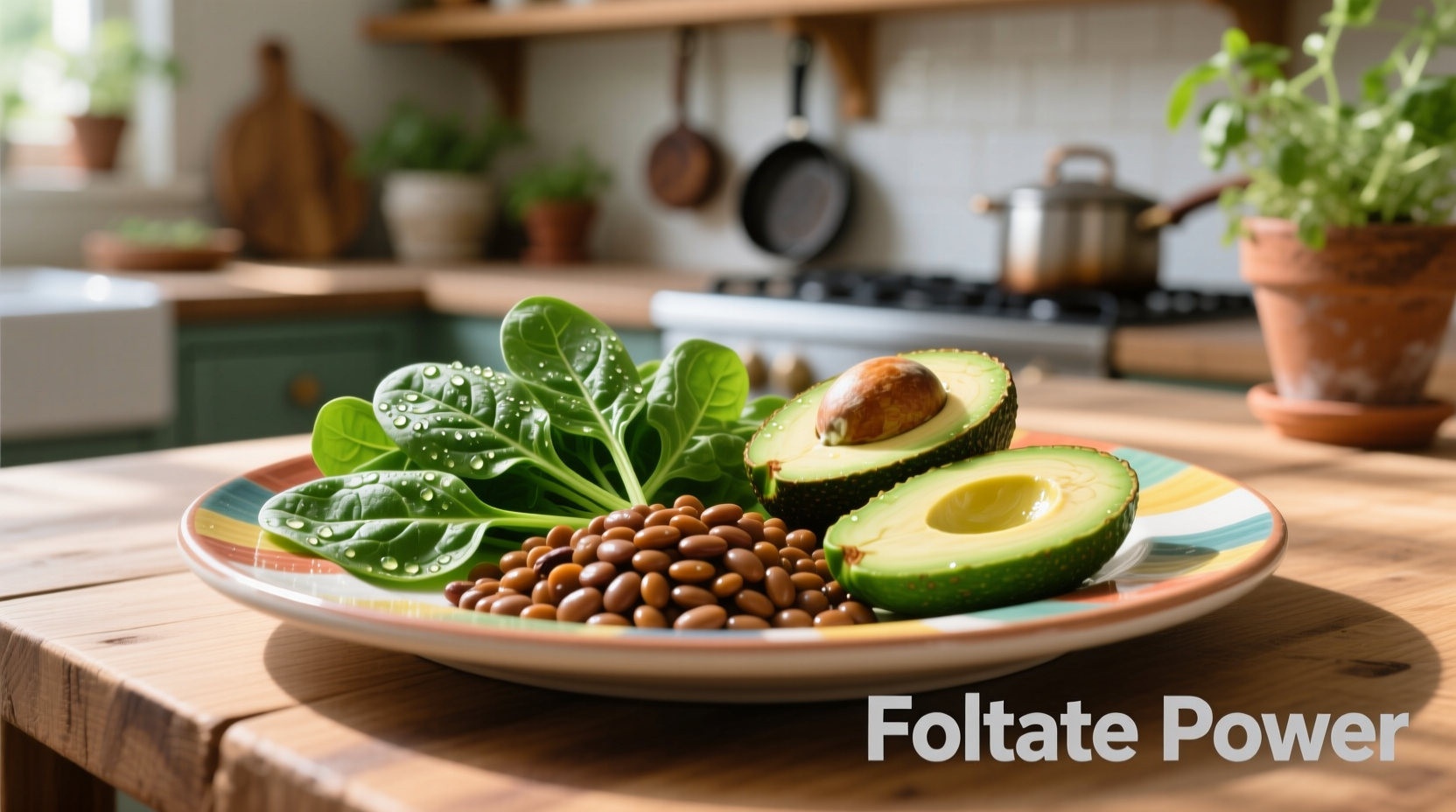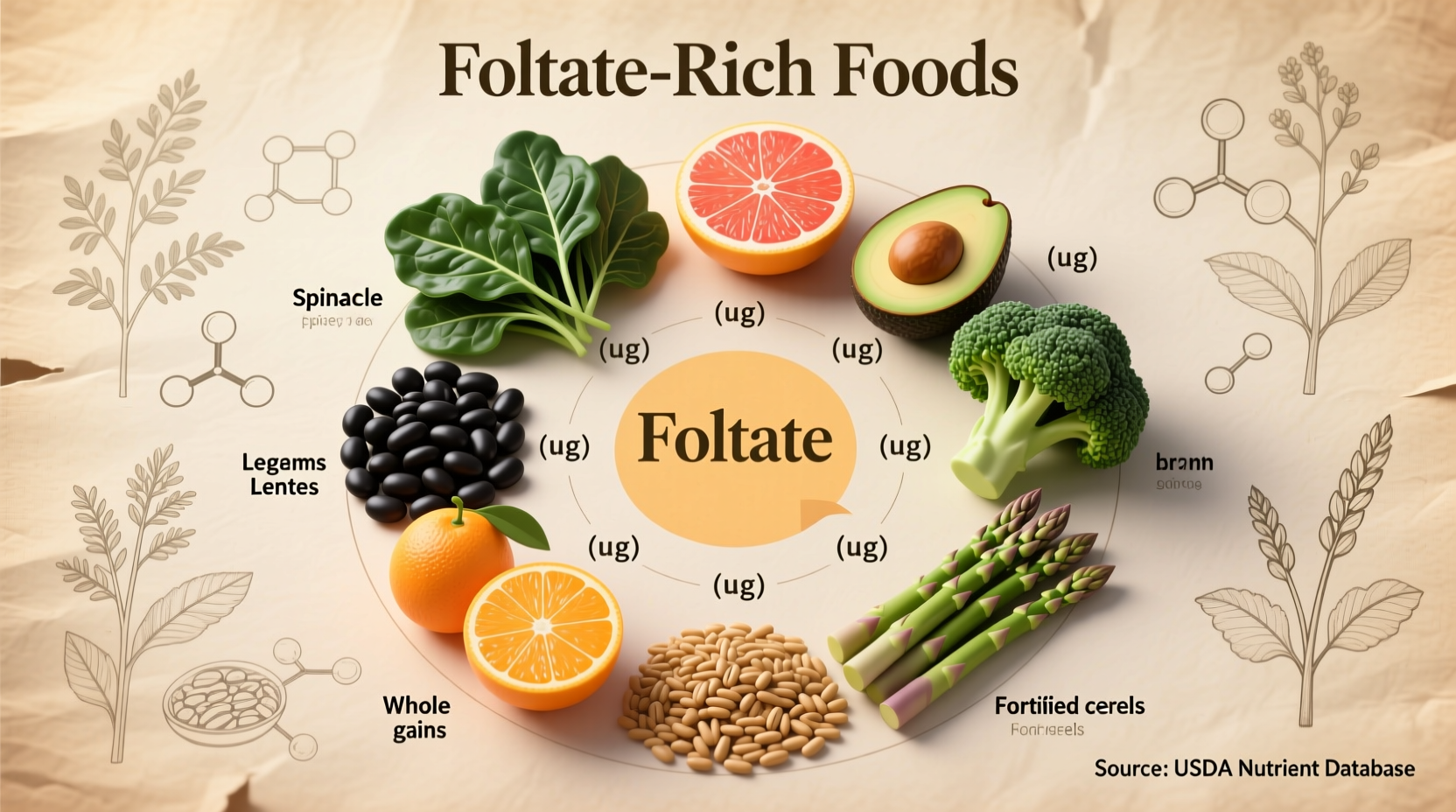Discover exactly which foods contain folate to optimize your nutrition. Whether you're planning pregnancy, addressing deficiency, or simply aiming for balanced nutrition, understanding natural folate sources makes all the difference. This guide delivers science-backed information about the best dietary sources of this vital nutrient.
Why Folate Matters for Your Health
Folate (vitamin B9) plays a critical role in your body's most fundamental processes. Unlike synthetic folic acid found in supplements, natural folate from food supports:
- DNA synthesis and cell division
- Red blood cell formation
- Prevention of neural tube defects in early pregnancy
- Homocysteine regulation for cardiovascular health
The National Institutes of Health recommends 400 mcg DFE (Dietary Folate Equivalents) daily for most adults, with pregnant women needing 600 mcg DFE. Since your body absorbs natural folate at about 50% efficiency compared to 85% for folic acid, focusing on folate-rich foods remains essential even if you take supplements.
Natural Food Sources of Folate: Complete Guide
Maximize your folate intake with these nutrient-dense options. The following table shows verified folate content from USDA FoodData Central, the official U.S. government nutrition database:
| Food | Serving Size | Folate (mcg DFE) | % Daily Value |
|---|---|---|---|
| Cooked lentils | 1 cup | 358 | 90% |
| Cooked spinach | 1 cup | 263 | 66% |
| Asparagus | 1 cup | 268 | 67% |
| Avocado | 1 medium fruit | 163 | 41% |
| Black-eyed peas | 1 cup | 210 | 53% |
| Romaine lettuce | 2 cups | 123 | 31% |
| Broccoli | 1 cup | 84 | 21% |
| Orange | 1 medium | 40 | 10% |
Leafy Greens: Nature's Folate Powerhouses
Dark leafy greens consistently rank among the best natural sources of folate. One cup of cooked spinach provides more than half your daily requirement. Other excellent options include:
- Collard greens (177 mcg per cooked cup)
- Turnip greens (170 mcg per cooked cup)
- Romaine lettuce (123 mcg per 2 cups raw)
Pro tip: Lightly steam greens instead of boiling to preserve folate content, as this water-soluble vitamin leaches into cooking water.
Legumes: Protein-Packed Folate Sources
Beans, lentils, and peas deliver impressive folate levels along with protein and fiber. The folate content in legumes has been recognized since the 1940s when researchers discovered their role in preventing anemia. Top choices include:
- Lentils (358 mcg per cooked cup) - excellent in soups and salads
- Chickpeas (282 mcg per cooked cup) - perfect for hummus
- Black beans (256 mcg per cooked cup) - great in Latin American dishes
Fruits and Vegetables with Significant Folate
Many common produce items contain meaningful folate amounts. One avocado provides 41% of your daily needs, making it one of the richest fruit sources. Other notable options:
- Asparagus (268 mcg per cooked cup) - highest among common vegetables
- Brussels sprouts (93 mcg per cooked cup)
- Okra (88 mcg per cooked cup)
- Oranges (40 mcg per medium fruit) - juice contains less due to processing

Maximizing Folate Absorption from Food
Your body absorbs natural folate at about 50% efficiency, but these strategies can help you get the most from folate-rich foods:
- Avoid overcooking - folate degrades with prolonged heat exposure
- Pair with vitamin C - enhances absorption (try lemon juice on spinach)
- Choose fresh over frozen - though frozen options retain significant folate
- Combine with protein sources - improves overall nutrient uptake
Unlike folic acid in supplements, natural folate from food doesn't carry the same concerns about unmetabolized folic acid circulating in the bloodstream, making whole food sources preferable when possible.
Special Considerations for Different Dietary Needs
Your folate requirements vary based on life stage and health status. These context boundaries matter when selecting folate sources:
- Pregnancy planning - Women should increase folate intake to 600 mcg DFE starting 3 months before conception
- Vegan diets - Focus on legumes, leafy greens, and fortified nutritional yeast
- MTHFR gene variation - Affects folate metabolism; natural food sources may be better tolerated
- Medication interactions - Certain drugs like methotrexate reduce folate absorption
Since the 1990s, research has evolved to recognize that natural folate from whole foods provides additional phytonutrients that work synergistically with vitamin B9, offering benefits beyond isolated supplements.
Practical Ways to Increase Folate Daily
Incorporate these simple strategies to boost your folate intake without drastic diet changes:
- Add spinach to smoothies (retains folate better than cooked)
- Snack on roasted chickpeas instead of chips
- Use avocado as sandwich spread instead of mayo
- Make lentil soup for easy meal prep
- Add black-eyed peas to salads for extra nutrition
Remember that folate content decreases over time in fresh produce. Purchase seasonal vegetables and consume them within 3-5 days for maximum nutrient retention. Store leafy greens in airtight containers with a damp paper towel to preserve freshness.











 浙公网安备
33010002000092号
浙公网安备
33010002000092号 浙B2-20120091-4
浙B2-20120091-4